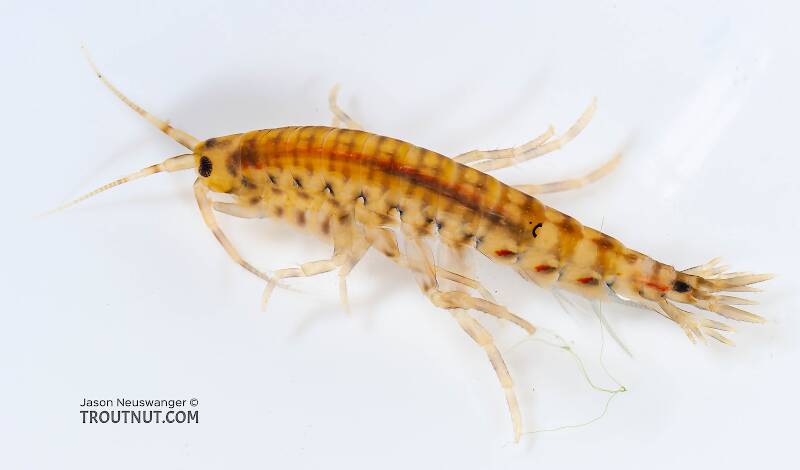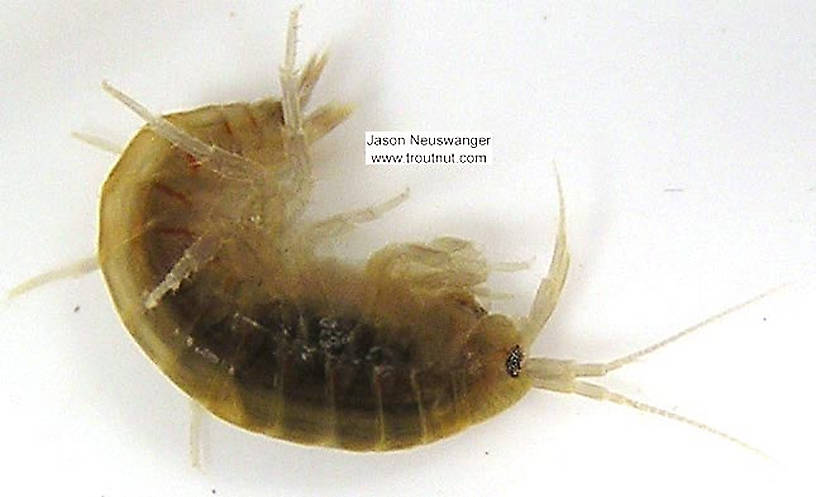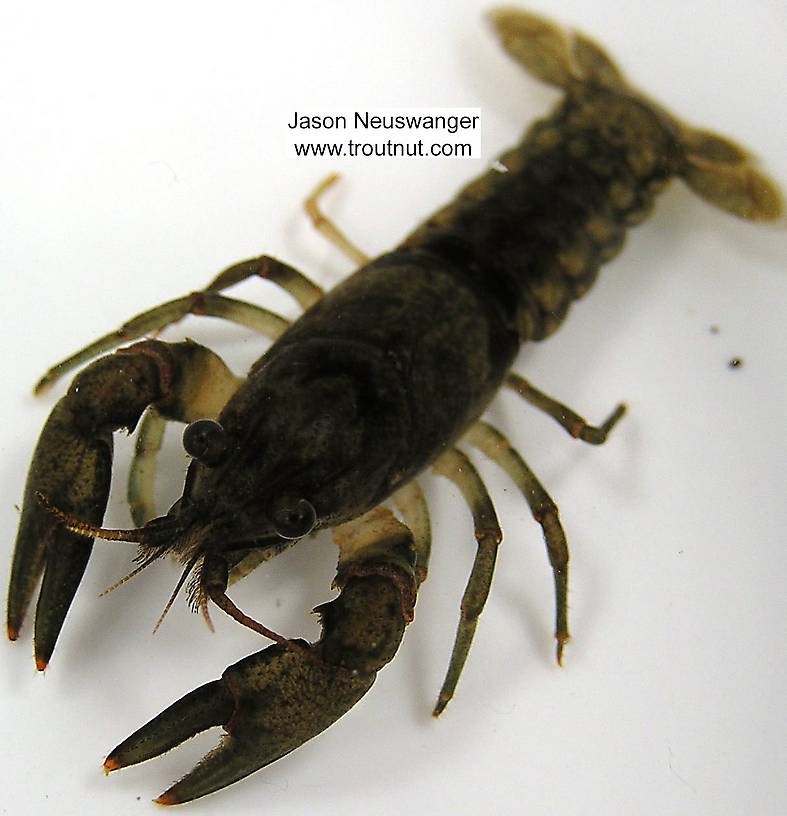
Hex Mayflies
Hexagenia limbata
The famous nocturnal Hex hatch of the Midwest (and a few other lucky locations) stirs to the surface mythically large brown trout that only touch streamers for the rest of the year.
Featured on the forum

It's only barely visible in one of my pictures, but I confirmed under the microscope that this one has a prosternal horn and the antennae are mid-way between the eyes and front of the head capsule.
I'm calling this one Pycnopsyche, but it's a bit perplexing. It seems to key definitively to at least Couplet 8 of the Key to Genera of Limnephilidae Larvae. That narrows it down to three genera, and the case seems wrong for the other two. The case looks right for Pycnopsyche, and it fits one of the key characteristics: "Abdominal sternum II without chloride epithelium and abdominal segment IX with only single seta on each side of dorsal sclerite." However, the characteristic "metanotal sa1 sclerites not fused, although often contiguous" does not seem to fit well. Those sclerites sure look fused to me, although I can make out a thin groove in the touching halves in the anterior half under the microscope. Perhaps this is a regional variation.
The only species of Pycnopsyche documented in Washington state is Pycnopsyche guttifera, and the colors and markings around the head of this specimen seem to match very well a specimen of that species from Massachusetts on Bugguide. So I am placing it in that species for now.
Whatever species this is, I photographed another specimen of seemingly the same species from the same spot a couple months later.
I'm calling this one Pycnopsyche, but it's a bit perplexing. It seems to key definitively to at least Couplet 8 of the Key to Genera of Limnephilidae Larvae. That narrows it down to three genera, and the case seems wrong for the other two. The case looks right for Pycnopsyche, and it fits one of the key characteristics: "Abdominal sternum II without chloride epithelium and abdominal segment IX with only single seta on each side of dorsal sclerite." However, the characteristic "metanotal sa1 sclerites not fused, although often contiguous" does not seem to fit well. Those sclerites sure look fused to me, although I can make out a thin groove in the touching halves in the anterior half under the microscope. Perhaps this is a regional variation.
The only species of Pycnopsyche documented in Washington state is Pycnopsyche guttifera, and the colors and markings around the head of this specimen seem to match very well a specimen of that species from Massachusetts on Bugguide. So I am placing it in that species for now.
Whatever species this is, I photographed another specimen of seemingly the same species from the same spot a couple months later.

Troutnut is a project started in 2003 by salmonid ecologist Jason "Troutnut" Neuswanger to help anglers and
fly tyers unabashedly embrace the entomological side of the sport. Learn more about Troutnut or
support the project for an enhanced experience here.
This topic is about the Arthropod Class Crustacea-Malacostraca
Crustaceans are classified as one of those inconvenient intermediate taxonomic levels, the subphylum. The varieties of interest to trout anglers are in the class Malacostraca.It contains the orders of scuds (Amphipoda), sowbugs (Isopoda), opossum or mysis shrimp (Mysida), and crayish (Decapoda). Crayfish and scuds are both extremely important trout prey.
Example specimens
DMM
Posts: 34
Posts: 34
DMM on Nov 29, 2006November 29th, 2006, 2:46 pm EST
Malacostraca is a class but Crustacea is a subphylum
David
Troutnut on Nov 30, 2006November 30th, 2006, 5:38 pm EST
Yeah, I mention that on this page.
I decided not to include all the sub-this and infra-that taxonomic levels on this site and stick to the ones covered in high school biology, because it makes the navigation much easier and it's sufficient for anglers' purposes.
For the rare cases in which some well-known taxon falls on a more obscure level (like crustaceans, damselflies, and dragonflies), I've appended or prepended it to the listed taxon with a hyphen and explained the details in the corresponding description. It's not the most graceful system but it works.
I decided not to include all the sub-this and infra-that taxonomic levels on this site and stick to the ones covered in high school biology, because it makes the navigation much easier and it's sufficient for anglers' purposes.
For the rare cases in which some well-known taxon falls on a more obscure level (like crustaceans, damselflies, and dragonflies), I've appended or prepended it to the listed taxon with a hyphen and explained the details in the corresponding description. It's not the most graceful system but it works.
Jason Neuswanger, Ph.D.
Troutnut and salmonid ecologist
Troutnut and salmonid ecologist
DMM
Posts: 34
Posts: 34
DMM on Dec 1, 2006December 1st, 2006, 2:40 am EST
Sorry about that, I guess I missed that explanation.
David





